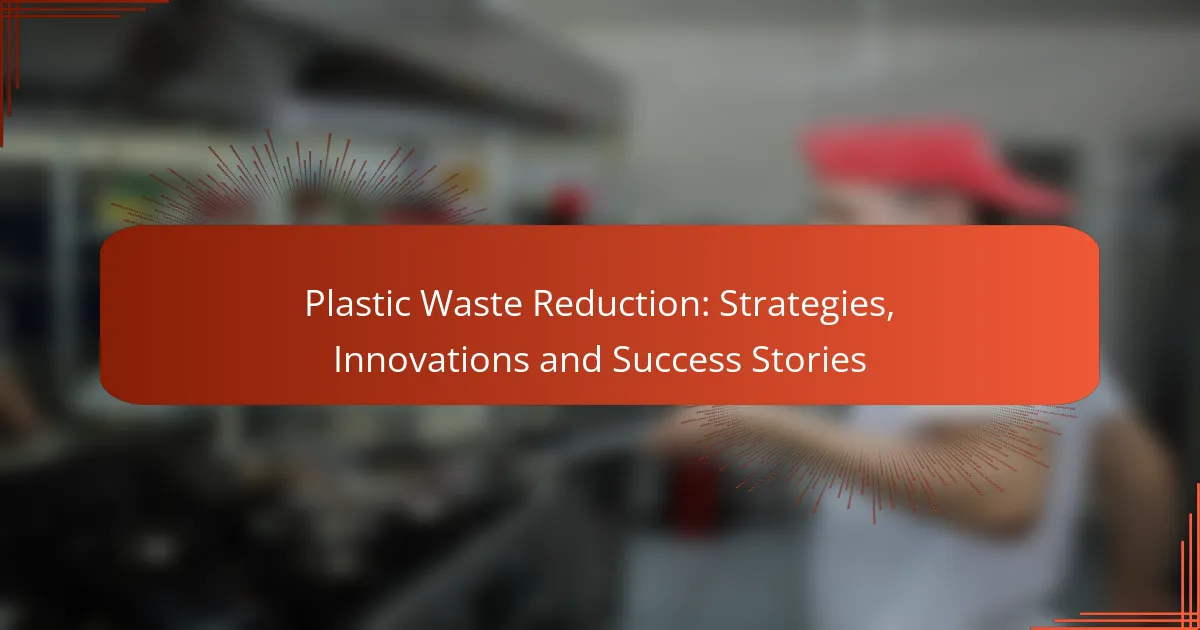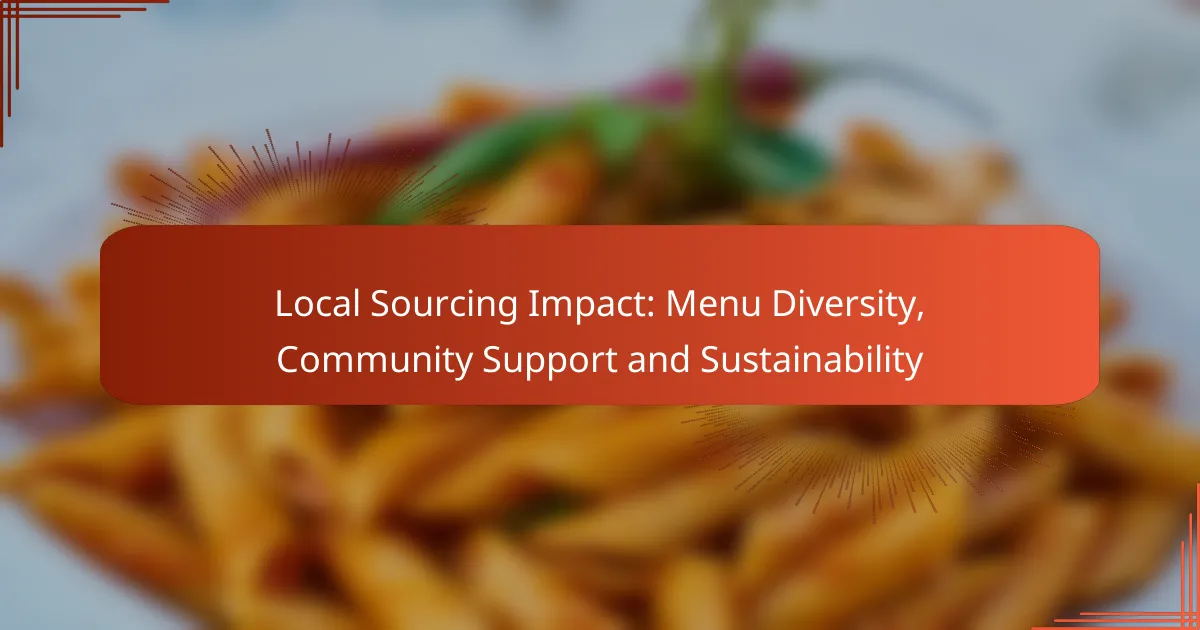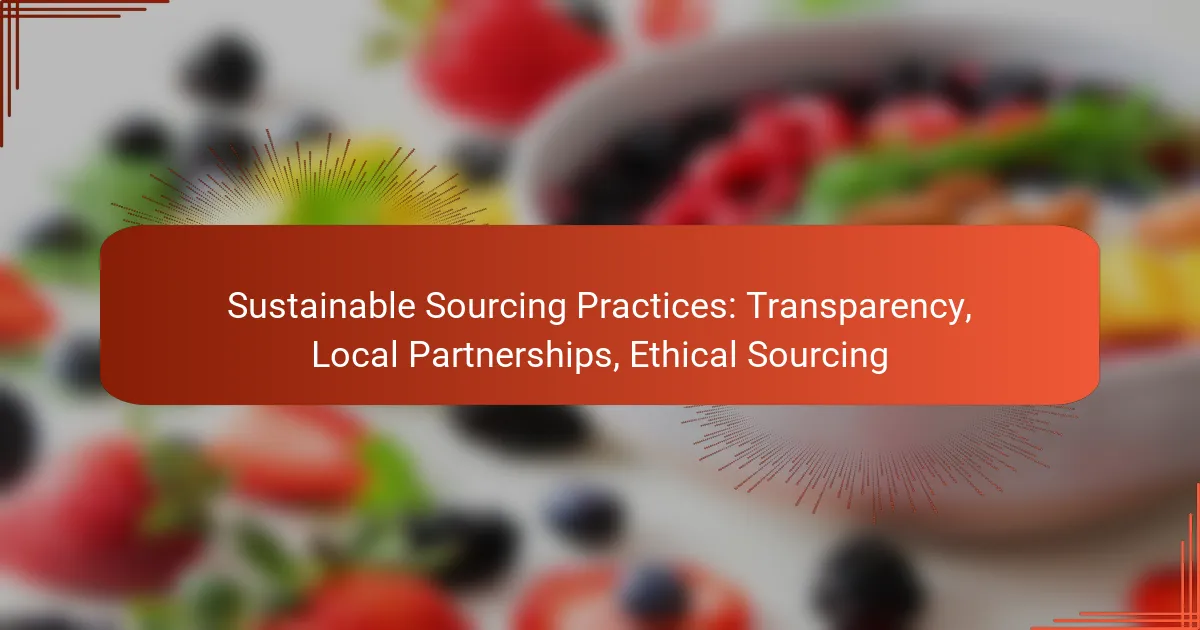Plastic waste reduction is a critical challenge that requires a multifaceted approach, including the adoption of reusable products, enhanced recycling programs, and corporate sustainability initiatives. By fostering education and innovation in packaging solutions, communities and businesses can significantly minimize plastic consumption and improve recycling rates. Success stories from various sectors demonstrate the effectiveness of these strategies, offering inspiration and practical solutions for a more sustainable future.
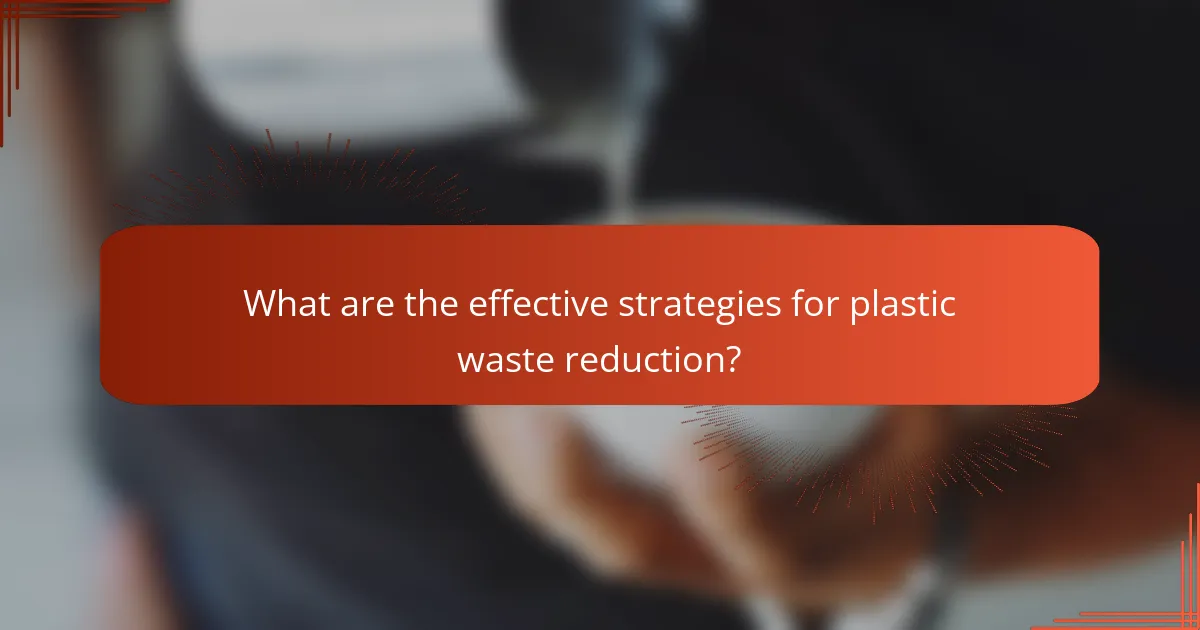
What are the effective strategies for plastic waste reduction?
Effective strategies for plastic waste reduction include implementing reusable product initiatives, enhancing community recycling programs, fostering corporate sustainability commitments, promoting education and awareness campaigns, and developing innovative packaging solutions. These approaches collectively aim to minimize plastic consumption and improve recycling rates.
Reusable product initiatives
Reusable product initiatives focus on encouraging consumers to opt for items that can be used multiple times instead of single-use plastics. Examples include reusable bags, water bottles, and containers. Retailers can support these initiatives by offering discounts to customers who bring their own reusable items.
To maximize impact, businesses should also consider providing incentives for customers to return used products for reuse or recycling. This not only reduces plastic waste but also fosters a culture of sustainability among consumers.
Community recycling programs
Community recycling programs play a crucial role in reducing plastic waste by providing accessible recycling options for residents. These programs often include curbside pickup, drop-off centers, and educational resources to inform the public about what can be recycled. Effective communication about accepted materials is essential for maximizing participation.
Local governments can enhance these programs by partnering with organizations to host recycling events or workshops, which can help raise awareness and improve recycling rates within the community.
Corporate sustainability commitments
Corporate sustainability commitments involve businesses pledging to reduce their plastic footprint through various measures, such as using recycled materials in their products or packaging. Many companies are setting ambitious goals to eliminate single-use plastics from their operations by specific target dates.
To be effective, these commitments should be transparent and measurable, allowing consumers to hold companies accountable. Brands that actively promote their sustainability efforts often see increased customer loyalty and trust.
Education and awareness campaigns
Education and awareness campaigns aim to inform the public about the impacts of plastic waste and the importance of reducing consumption. These campaigns can take various forms, including social media outreach, workshops, and informational materials distributed in schools and communities.
Effective campaigns often use engaging visuals and relatable messaging to resonate with diverse audiences. Collaborating with local influencers or organizations can amplify the reach and impact of these initiatives.
Innovative packaging solutions
Innovative packaging solutions focus on developing alternatives to traditional plastic packaging that are more sustainable. This includes biodegradable materials, compostable packaging, and designs that minimize material use while maintaining product integrity. Companies are increasingly exploring options like plant-based plastics and recycled paper products.
When considering packaging innovations, businesses should evaluate the entire lifecycle of materials, including sourcing, production, and disposal, to ensure they are genuinely reducing environmental impact. Engaging consumers in the conversation about packaging choices can also drive demand for sustainable options.
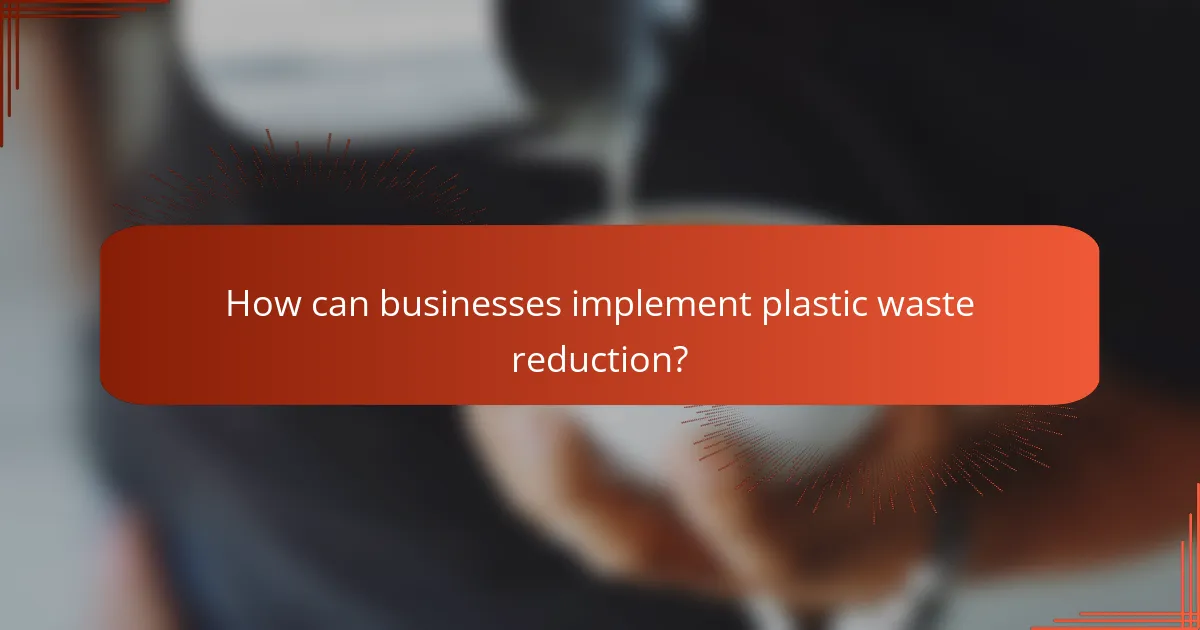
How can businesses implement plastic waste reduction?
Businesses can implement plastic waste reduction by adopting sustainable practices that minimize plastic usage and promote recycling. Key strategies include integrating circular economy principles, collaborating with eco-friendly suppliers, and investing in biodegradable materials.
Adopting circular economy principles
Adopting circular economy principles involves designing products and processes that keep materials in use for as long as possible. This can be achieved through strategies like product life extension, repairability, and recycling initiatives.
For example, companies can create take-back programs that encourage customers to return used products for recycling or refurbishment. This not only reduces plastic waste but can also enhance brand loyalty and customer engagement.
Partnering with eco-friendly suppliers
Partnering with eco-friendly suppliers is crucial for businesses aiming to reduce plastic waste. By sourcing materials from suppliers who prioritize sustainability, companies can ensure that their products are made with less plastic or alternative materials.
When selecting suppliers, businesses should evaluate their sustainability practices, such as using recycled materials or adopting green manufacturing processes. This collaboration can lead to innovative solutions that benefit both parties and contribute to overall waste reduction.
Investing in biodegradable materials
Investing in biodegradable materials is an effective way for businesses to reduce their plastic footprint. These materials break down more naturally in the environment, minimizing long-term waste impact.
Examples include plant-based plastics or compostable packaging options. While these materials may have higher upfront costs, they can appeal to environmentally conscious consumers and help companies comply with increasing regulations on plastic use.
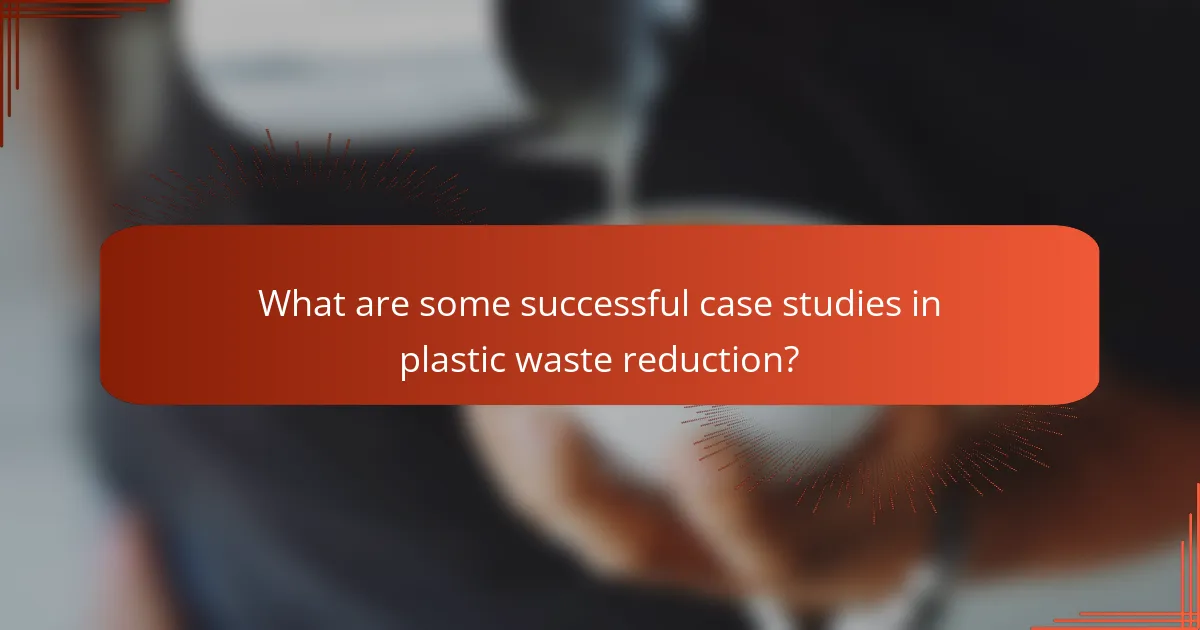
What are some successful case studies in plastic waste reduction?
Several companies have implemented effective strategies for reducing plastic waste, showcasing innovative approaches that can inspire others. These case studies highlight practical solutions and measurable impacts in various sectors.
Unilever’s sustainable sourcing
Unilever has committed to sourcing all of its plastic packaging from recycled or renewable sources by 2025. This initiative not only reduces reliance on virgin plastics but also supports the recycling industry by creating demand for recycled materials.
The company has partnered with various organizations to improve waste management systems, particularly in developing countries. By investing in local recycling infrastructure, Unilever aims to enhance the circular economy and minimize plastic waste in communities.
Starbucks’ reusable cup program
Starbucks has introduced a reusable cup program that encourages customers to bring their own cups for drinks, offering discounts as an incentive. This initiative aims to significantly reduce the number of single-use cups that end up in landfills.
In addition to promoting reusable cups, Starbucks has set a goal to make all of its cups recyclable or compostable by 2022. The company is actively exploring new materials and technologies to achieve this target while engaging customers in sustainability efforts.
Patagonia’s recycling initiatives
Patagonia has been a leader in promoting recycling through its Worn Wear program, which encourages customers to repair and recycle their outdoor gear. This initiative extends the life of products and reduces the demand for new materials, thereby decreasing plastic waste.
The company also uses recycled materials in its products, with a significant percentage of its polyester sourced from recycled plastic bottles. By prioritizing sustainability in its supply chain, Patagonia sets an example for other brands in the outdoor apparel industry.
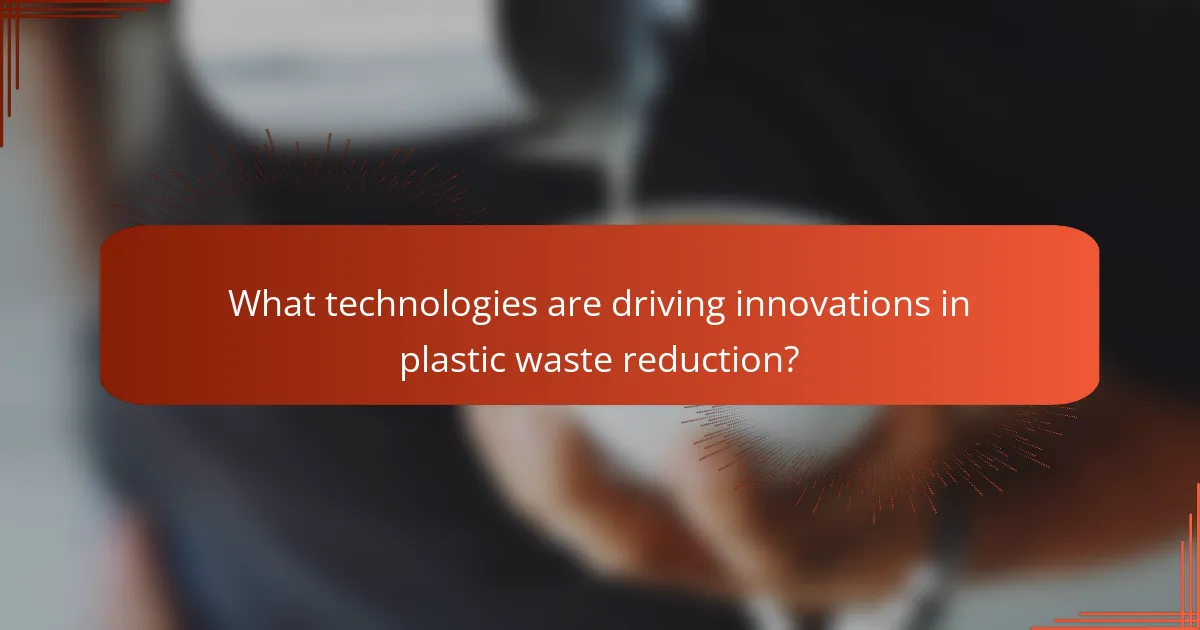
What technologies are driving innovations in plastic waste reduction?
Innovative technologies are crucial in reducing plastic waste by enhancing recycling processes, developing alternative materials, and converting waste into energy. These advancements not only improve efficiency but also contribute to a more sustainable circular economy.
Advanced recycling technologies
Advanced recycling technologies, such as chemical recycling and enzymatic processes, break down plastics into their original monomers or other useful materials. This allows for the recycling of plastics that are typically non-recyclable through conventional methods. For example, chemical recycling can handle mixed plastics, which are often discarded due to contamination.
Key players in this field include companies that utilize pyrolysis and depolymerization techniques. These methods can convert plastic waste into fuels or feedstock for new plastic production. As these technologies evolve, they are expected to increase recycling rates significantly, potentially reaching over 50% in the coming years.
Bioplastics development
Bioplastics are an emerging alternative to traditional petroleum-based plastics, made from renewable resources like corn starch, sugarcane, or even algae. These materials can reduce reliance on fossil fuels and often have a lower carbon footprint. Some bioplastics are designed to be biodegradable, breaking down more easily in the environment compared to conventional plastics.
However, the development of bioplastics comes with trade-offs, such as competition for agricultural land and resources. It’s essential to consider the lifecycle impact of bioplastics, including their production, use, and disposal, to ensure they provide a genuine environmental benefit.
Waste-to-energy conversion
Waste-to-energy conversion technologies transform plastic waste into energy through processes like incineration, gasification, or anaerobic digestion. This approach not only reduces the volume of waste sent to landfills but also generates electricity or heat, contributing to energy needs. For instance, incineration can convert plastics into energy while minimizing harmful emissions through advanced filtration systems.
While waste-to-energy can be an effective solution, it is crucial to implement strict regulations to manage emissions and ensure that the process does not harm the environment. Communities should evaluate the potential benefits and drawbacks of waste-to-energy facilities, considering local waste management strategies and energy demands.
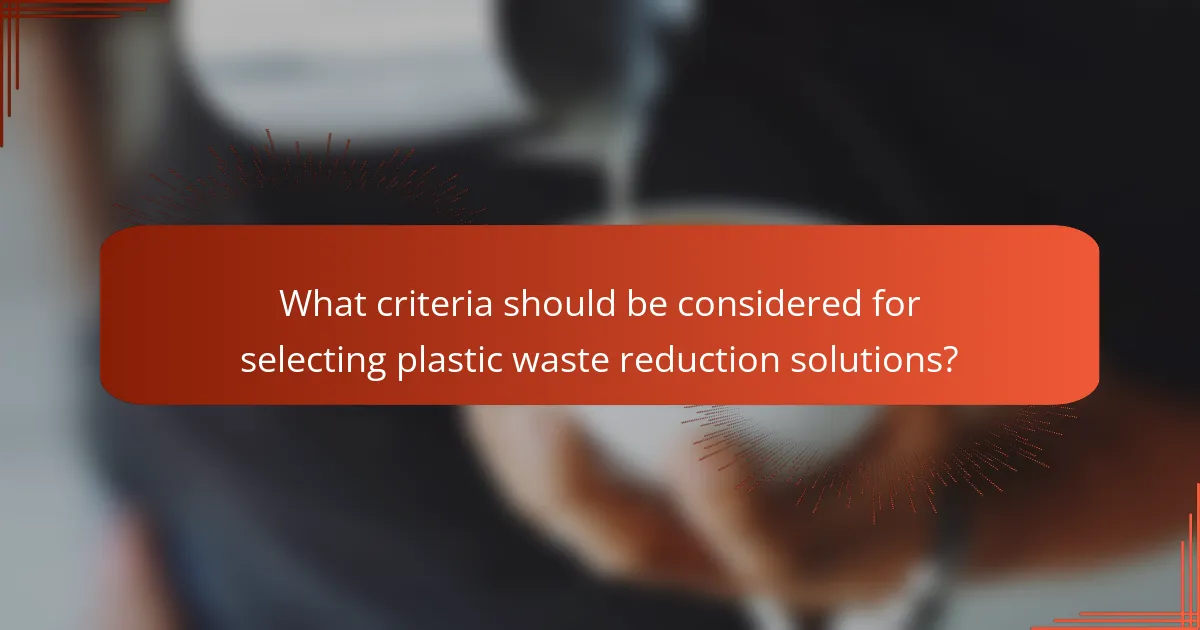
What criteria should be considered for selecting plastic waste reduction solutions?
When selecting plastic waste reduction solutions, consider factors such as environmental impact, cost-effectiveness, scalability, and community acceptance. These criteria ensure that the chosen strategies are not only effective but also sustainable and practical for implementation.
Cost-effectiveness analysis
Cost-effectiveness analysis evaluates the financial implications of various plastic waste reduction strategies. It compares the costs associated with implementing a solution against the benefits it brings, such as reduced waste disposal fees or potential revenue from recycled materials.
Key considerations include initial investment, operational costs, and long-term savings. For instance, investing in a recycling facility may have high upfront costs but can lead to significant savings over time by reducing landfill fees and generating income from recycled products.
To conduct a thorough analysis, create a list of potential solutions and estimate their costs and benefits. This can help prioritize options that offer the best return on investment while effectively reducing plastic waste. Avoid solutions that may appear cost-effective initially but incur hidden costs or negative environmental impacts in the long run.
